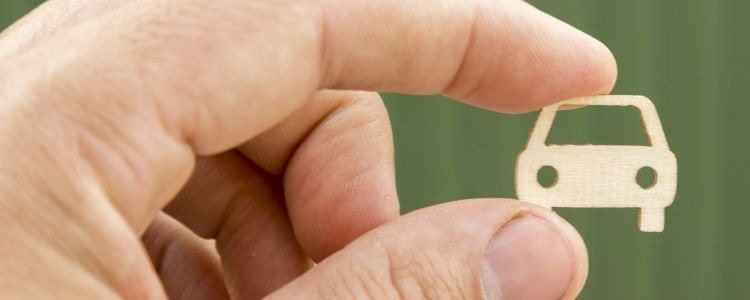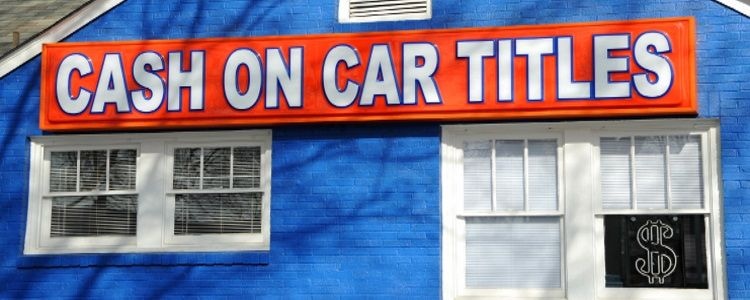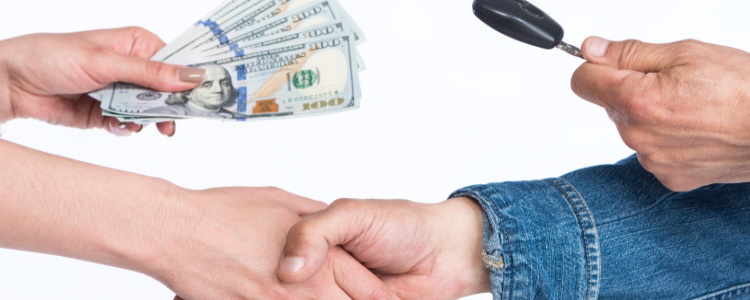Life situations change all the time; from a new family member to a new hobby, the kind of vehicle you financed three years ago may not work now. Don’t worry, because dealerships are often willing to accept a trade-in that isn’t completely paid off. Here’s how it works.
Trading In a Car to a Dealer
 When you take your vehicle to a dealership, the dealer is the one that determines your trade-in’s value. They’re going to look it over, and probably start it up and take it for a drive.
When you take your vehicle to a dealership, the dealer is the one that determines your trade-in’s value. They’re going to look it over, and probably start it up and take it for a drive.
After your car is looked at and appraised, you’re given an offer. Since you’re still financing your trade-in, you need enough to be able to pay off your current loan. Hopefully, you get a large enough offer that can cover the balance. If not, you must pay the rest yourself in order to sell the vehicle.
If you’re offered more than your loan’s payoff amount, the leftover cash can be used to put toward your next car’s selling price, and lower the amount you need to finance moving forward.
If you do get an offer that can cover your loan balance, the dealership writes a check that gets sent to your auto lender to pay off the loan. The lender can then remove the lien on the trade-in’s title, and the vehicle can be sold to the dealer. Remember: a financed car can’t be traded in or sold until the lien is removed from its title.
Checking for Equity on a Financed Vehicle
Having lots of equity is beneficial when you need to trade in your financed vehicle. Equity is when you owe less on the car than its cash value, and the equity is what you can use to knock down your next vehicle’s selling price. If you owe more on your car than it’s worth, it could mean trouble. We cover both sides of the equity coin.
But first, before you head to the dealership, you should get a rough idea of what the estimated value of your vehicle is so you can tell what equity position you’re in.
Remember, the actual cash value of your car is whatever a dealer offers you for it, and it may not match what you see on online valuation sites. You should also get a hold of your lender or use online services to check your current loan balance.
Luckily, it’s relatively easy enough to get an estimate on your vehicle’s trade-in value nowadays. You can use sites like NADAguides or Kelley Blue Book and enter in your car’s information and get a ballpark valuation. Compare those estimations to your financed vehicle’s loan balance.
If you owe less on the car than it’s likely to be valued at, then you’re most likely in an equity position – great! If you owe more than the vehicle’s estimated value, you’re in a negative equity position – not so great.
If your car has negative equity, the trade-in value you’re likely to get can’t help you knock down your next vehicle’s selling price, and you may not even get enough from the dealership to pay off your current loan to be able to sell the car.
If you’ve found yourself in a negative equity position, also called being upside down on your loan, how much negative equity you have is going to determine your next step. If you don’t owe much more than your loan balance, you could simply pay that difference in cash to pay off the loan and remove the lien. Or, you could give yourself a few months and work to pay down your loan to get yourself in an equity position, and then trade the financed vehicle in.
Getting the Most Out of Your Trade-In
Once you have an estimated value and your loan balance, you can walk confidently into a dealership. However, we’ve got some tips on getting the most out of your trade-in:
- Discuss your next car’s price first. Before you reveal that you have a trade-in, work on coming to an agreement on your next vehicle’s selling price. You should treat the trade-in and your next car’s transactions separately. Once you have the vehicle’s selling price down on a buyer’s order, reveal the trade-in, and discuss that transaction separately.
- Clean your trade-in. A dirty car may not give the best impression while it’s being appraised. Don’t clean out all your personal possessions, though, since a perfectly clean trade-in may give the impression that you’re ready to buy now, and you may lose some bargaining power, since the dealer may notice that you’re in a rush.
- Don’t worry too much about big repairs. The dealership can usually fix large repairs for less than you can. If you spend too much on expensive repairs, you could end up putting more into the vehicle than you might be offered. Minor scratches and cabin stains are likely to be worth cleaning up, though.
- Call around. You don’t have to settle for the first trade-in offer you get. Take time to call around to a few dealers before you drive anywhere, so you can see what your car is going for in your area. This can also give you some bargaining power.
Planning ahead is a good way to approach trading in a financed vehicle. A little bit of research, sprucing up your car, and calling around to different dealerships can really go a long way.
If you don't like the offers you're getting from dealers, you can always try to sell your vehicle yourself. You may be able to get more for it, but it does require more legwork on your end.
Bad Credit and Trade-Ins
Trade-ins, financed or not, are very common and usually helpful for bad credit borrowers. If you’re a borrower with less than perfect credit, you’re probably going to need a down payment to get into your next auto loan.
However, the down payment amount doesn’t need to be paid in just cash. A trade-in with equity can allow you to cover the down payment requirement of bad credit car lenders.
Typically, a bad credit lender requires a down payment of at least $1,000 or 10% of the vehicle’s selling price (sometimes whichever is less). The selling price of your next car, your income, and your personal situation are all going to determine how much of a down payment you’re going to need to bring to the table.
Besides helping bad credit borrowers get into an auto loan, trade-ins lower your monthly payment, since they knock down the amount you’d need to finance on your next vehicle. Since you’re lowering the amount you need to finance, you’re also saving some cash on interest charges, which can stack up if you have less than perfect credit.
Down payments and trade-ins are great resources for borrowers, and dealerships are used to buyers having both. Whatever dealer you choose to work with, they’re likely well versed in handling trade-ins, even ones that are still being financed.
Finding a Bad Credit Car Dealership
While it isn’t usually that difficult to find a dealership that can take in your financed trade-in, finding a lender that can work with your bad credit is a different story. Most traditional car lenders turn down borrowers with lower credit scores, but there are lenders equipped to deal with many different credit situations.
If you need a dealer with bad credit lending resources, get with us at Auto Credit Express. We have a network of dealerships that expands coast to coast, and we match bad credit borrowers to them for no cost. To get started, fill out our secure auto loan request form.
















